Habitat Types
For the creation of an inventory of the habitat types which occur in the area of the Management Body of Pamvotis Lake the following programmes were implemented:
I) “Identification and description of the habitat types which occur in areas of interest for nature conservation”. Ministry for the Environment, Physical Planning and Public Works of Greece, 1999-2001.
II) Special Environmental Study “Restoration - Promotion - Protection of Pamvotis Lake of Ioannina and its wider area.” Region of Epirus, 1999 - 2000.
Specifically, the following types are found, both those included in the Directive 92/43/EEC, as well as the Greek habitat types which are not included in the Directive (Source: Ministry for the Environment, Physical Planning and Public Works of Greece 2001, Identification Guide).
| NATURA CODE | Habitat Type name | Directive 92/43 / EEC |
| 3150 | Natural eutrophic lakes with Magnopotamion or Hydrocharition - type vegetation
| YES |
Lakes and ponds with mostly dirty grey to blue-green, more or less turbid, waters, particularly rich in dissolved bases (pH usually > 7), with free-floating surface communities of the Hydrocharition or, in deep, open waters, with associations of large pondweeds (Magnopotamion).
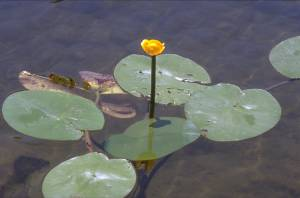
| NATURA CODE | Habitat Type name | Directive 92/43 / EEC |
| 3260 | Water courses of plain to montane levels with the Ranunculion fluitantis and Callitricho-Batrachion vegetation | YES |
Water courses of plain to montane levels, with submerged or floating vegetation of the Ranunculion fluitantis and Callitricho-Batrachion (low water level during summer) or aquatic mosses.
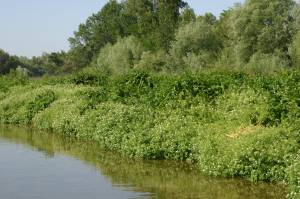
| NATURA CODE | Habitat Type name | Directive 92/43 / EEC |
| 3290 | Intermittently flowing Mediterranean rivers of the Paspalo Agrostidion | YES |
Intermittently flowing Mediterranean rivers with Paspalo-Agrostidion communities. They correspond to the river type 24.53, but with the particularity of an interrupted flow and a dry bed during a part of the year. The bed of the river can be completely dry or left with some pools.
| NATURA CODE | Habitat Type name | Directive 92/43 / EEC |
| 4090 | Endemic oro-Mediterranean heaths with gorse | YES |
Primary cushion heaths of the high, dry mountains of the Mediterranean and Irano-Turanian regions, with low, cushion-forming, often spiny shrubs, such as Acantholimon, Astragalus, Erinacea, Vella, Bupleurum, Ptilotrichum, Genista, Echinospartum, Anthyllis and various composites and labiates; secondary, zoogenic cushion heaths of the same regions, either downslope extensions of the high-altitude formations, and dominated by the same species, or specifically montane or steppic, often Genista-dominated in the Mediterranean region. Excluded are cushionheaths
of thermo-Mediterranean lowlands (33) and of deserts and semideserts (7).
Sub-type:
Helleno-Balkanic sylvatic Astragalus hedgehog-heaths Hedgehog-heaths occupying situations peripheral to the main range of the alti- and oro-Mediterranean hedgehog-heath communities of high Hellenic mountains (31.79 and 31.7A), mostly dominated by Astragalus angustifolius, characteristic, in particular, of zoogenous clearings within the forest belt of southern Greek mountains and of regions of irradiation of Mediterranean communities within the hills and mountains of the Moesian zone.
| NATURA CODE | Habitat Type name | Directive 92/43 / EEC |
| 5210 | Arborescent matorral with Juniperus spp. | YES |
| (5211) | (High scrub with Juniperus oxycedrus) | YES |
Mediterranean and sub-Mediterranean evergreen sclerophyllous scrub organized around arborescent junipers. Mixed dominance can be indicated by combination of codes.
Sub-types
32.131 - Juniperus oxycedrus arborescent matorral
Arborescent matorral dominated by Juniperus oxycedrus s.l.
32.132 - Juniperus phoenicea arborescent matorral
Arborescent matorral dominated by Juniperus phoenicea s.l..
32.133 - Juniperus excelsa and J. foetidissima arborescent matorrals
Arborescent matorrals of Greece, Anatolia and the Near East, dominated by Juniperus excels or J. foetidissima.
32.134 - Juniperus communis arborescent matorral
Mediterranean formations dominated by Juniperus communis.
32.135 - Juniperus drupacea arborescent matorral
Formations derived from 42.A5, limited to the Peloponnese and Asia Minor.
32.136 - Juniperus thurifera arborescent matorral
Formations derived from 42.A2.
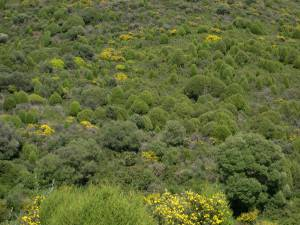
| NATURA CODE | Habitat Type name | Directive 92/43 / EEC |
| 5420 | Sarcopoterium spinosum phryganas | YES |
Low, thorny formations of hemispherical shrubs of the coastal thermo-Mediterranean zone of Aegean islands, of mainland Greece and the Ionian islands, of coastal Anatolia, much more widespread and diverse than the western Mediterranean formations.
| NATURA CODE | Habitat Type name | Directive 92/43 / EEC |
| 6220* | *Pseudo-steppe with grasses and annuals of the Thero-Brachypodietea (*Priority type of habitat)
| YES |
| * Priority Type |
Meso- and thermo-Mediterranean xerophile, mostly open, short-grass annual grasslands rich in therophytes; therophyte communities of oligotrophic soils on base-rich, often calcareous substrates. Perennial communities - Thero-Brachypodietea, Thero-Brachypodietalia: Thero-Brachypodion. Poetea bulbosae: Astragalo-Poion bulbosae (basiphile), Trifolio-Periballion (silicolous). Annual communities - Tuberarietea guttatae Br.-Bl. 1952 em. Rivas-Martínez 1978, Trachynietalia distachyae Rivas-Martínez 1978: Trachynion distachyae (calciphile), Sedo-Ctenopsion (gypsophile), Omphalodion commutatae (dolomitic and silico-basiphile).
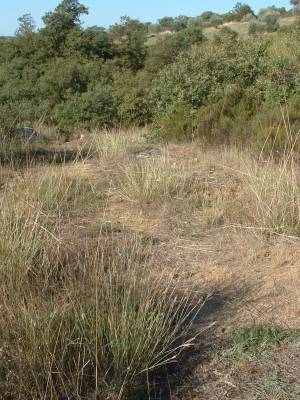
| NATURA CODE | Habitat Type name | Directive 92/43 / EEC |
| 92Α0 | Salix alba and Populus alba galleries | YES |
Riparian forests of the Mediterranean and Black Sea basins dominated by Salix alba, Salix fragilis or their relatives. Mediterranean and Central Eurasian multi-layered riverine forests with Populus spp., Ulmus spp., Salix spp., Alnus spp., Acer spp., Tamarix spp., Juglans regia, Quercus robur, Quercus pedunculiflora, Fraxinus angustifolia, Fraxinus pallisiae, lianas. Tall poplars, Populus alba, Populus caspica, Populus euphratica (Populus diversifolia), are usually dominant in height; they may be absent or sparse in some associations which are then dominated by species of the genera listed above.
| NATURA CODE | Habitat Type name | Directive 92/43 / EEC |
| 92C0 | Platanus orientalis and Liquidambar orientalis woods (Plantanion orientalis)
| YES |
92C0: Forests and woods, for the most part riparian, dominated by Platanus orientalis (oriental plane) or Liquidambar orientalis (sweet gum), belonging to the Platanion orientalis alliance.
Sub-types
44.71 - Oriental plane woods (Platanion orientalis)
Forests of Platanus orientalis.
44.711 - Helleno-Balkanic riparian plane forests Platanus orientalis gallery forests of Greek and southern Balkanic watercourses, temporary rivers and gorges; they are distributed throughout the mainland and archipelagos, colonising poorly stabilised alluvial deposits of large rivers, gravel or boulder deposits of permanent or temporary torrents, spring basins, and particularly, the bottom of steep, shady gorges, where they constitute species-rich communities.
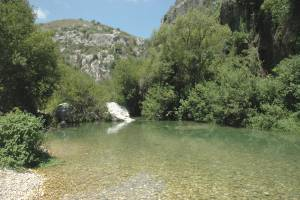
| NATURA CODE | Habitat Type name | Directive 92/43 / EEC |
| 9530 | (Sub-)Mediterranean pine forests with endemic black pines. | YES |
| (9536*) | Montane forests of Pinus pallasiana of Greece and the Balkan peninsula. | YES |
| *Priority Type |
Forests of the montane-Mediterranean level, on dolomitic substrate (high tolerance to magnesium), dominated by pines of the Pinus nigra group, often with a dense structure. The substrate in the majority of the cases are overbased ophiolite (peridotite, gabbro, doleric, serpentine), but in many cases it is limestone, gneiss and slate (rarely granite). The relief is rarely flat and is usually in the form of slopes with various gradients and varied exhibition, at altitudes of 450 - 1500 m.
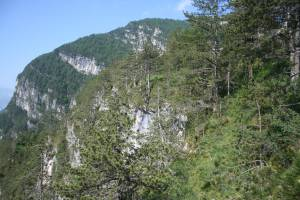
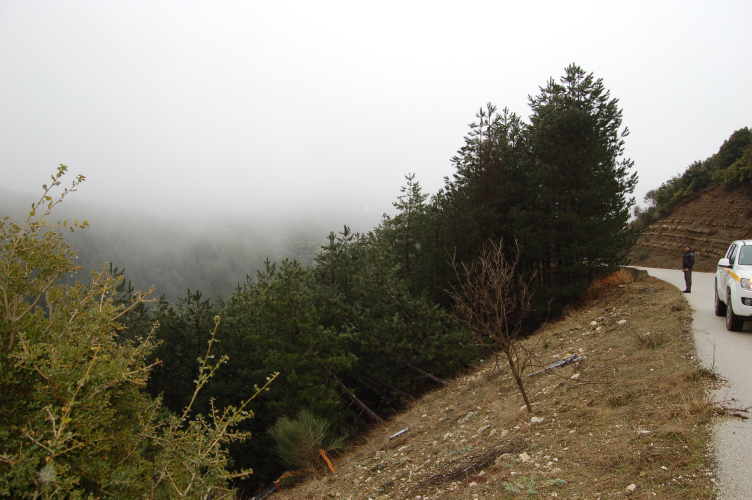
| NATURA CODE | Habitat Type name | Directive 92/43 / EEC |
| 9540 | Mediterranean pine forests with endemic Mesogean pines
| YES |
Mediterranean and thermo-Atlantic woods of thermophilous pines, mostly appearing as substitution or paraclimactic stages of forests of the Quercetalia ilicis or Ceratonio-Rhamnetalia. Long established plantations of these pines, within their natural area of occurrence, and with an undergrowth basically similar to that of paraclimactic formations, are included. However, this view is questionable, because basically these forests consist a destructive succession. A key element of their existence are the forest fires in which all items are perfectly adjusted. In this category are enclosed old plantations as well as afforestation of these species in the natural area of their spread, and in which the composition of the understorey is identical to that of the natural forests.
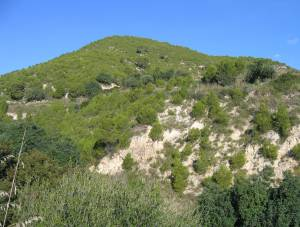
| NATURA CODE | Habitat Type name | Directive 92/43 / EEC |
| 5340 | Garrigues of Eastern Mediterranean | NO |
Bush formations, often low, the medium-warm and super-Mediterranean zone of Greece. It includes all “sclerophyllous” formations, whatever substrate, excluding special formations (brushwood, heathland).
| NATURA CODE | Habitat Type name | Directive 92/43 / EEC |
| 5350 | Pseudo-makki | NO |
Bush formations, intermediate between the Mediterranean scrub (maquis) and Schibljak, are generated by the degradation of Ostryo-Carpinion in Greece, the Balkans and Italy, with a mix of evergreen and deciduous species (shrubs), including the species: Quercus coccifera, Juniperus oxucedrus , Quercus trojana, Carpinus orientalis, Ostrya carpinifolia, Pistacia terebinthus, Buxus sempervirens, Jasminus fruticans, Fraxinus ornus, Cercis siliquastrum (Coccifero - Carpinetum Honvat).
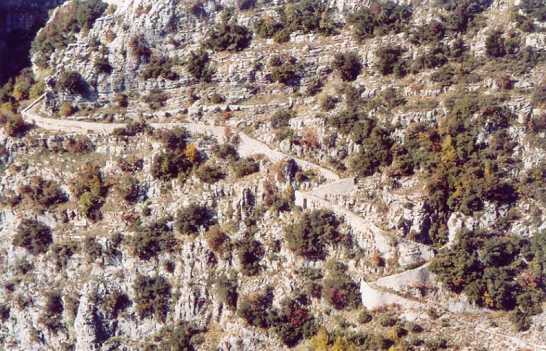
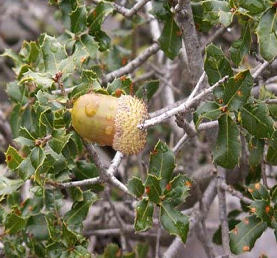
| NATURA CODE | Habitat Type name | Directive 92/43 / EEC |
| 72Α0 | Reeds | NO |
Phragmition australis, Scirpion maritimi: Formations of reeds with high “elofyta” are usually poor in species and are often dominated by one species that grows in stagnant or slowly flowing waters with varying levels and sometimes in water-saturated soils. They can be classified according to dominant species, which give them a distinctive appearance. The reeds grow on the banks of a small slope and alluvium-clay substrate. They occupy the superior sub-coastal zone and the zone of the emerging macrophytes, which usually spread from the shore to the water depths of about one meter.
| NATURA CODE | Habitat Type name | Directive 92/43 / EEC |
| 924A | Thermophilic oak forests of Eastern Mediterranean and Balkan Reeds | NO |
It concerns oak forests, where Quercus frainetto dominates and sometimes is mixed with the Quercus cerris. They occur at an altitude 600-1200 meters in various formations, mainly in flysch and rarely in shale and limestone. These ecosystems are not considered particularly vulnerable, if the illegal logging and overgrazing is controlled. Their proper management (seedling) will lead to a further stability and progressive development.
| NATURA CODE | Habitat Type name | Directive 92/43 / EEC |
| 925A | Forests of Ostrya carpinifolia, Carpinus betulus and mixed thermophilous forests
| NO |
This type of habitat is found mainly in limestone, in inclination which varies mainly to 40%. These formations reflect a huge ecological importance for our country. The floristic composition is rich in both arboreal, shrubby and herbaceous species. It appears on various substrates, such as carbonates (limestone, marble), gneiss, schist, volcanic and in alluvial deposits. In valleys and slopes with small or big slope they have a frequent presence, with different exposure and altitudes 50 - 1500 m.
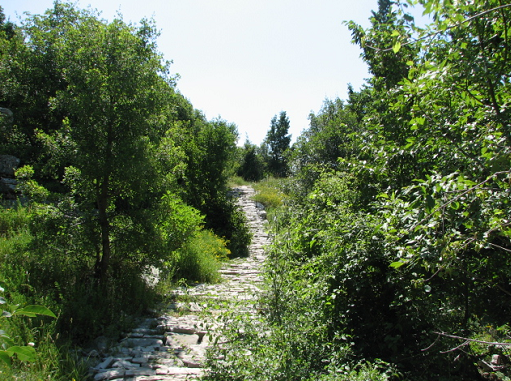
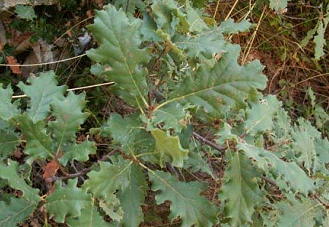
| NATURA CODE | Habitat Type name | Directive 92/43 / EEC |
| 934A | Greek Quercus spp forests | NO |
934Α: It is found practically in every type of geological substrate, with particular incidence, but on hard limestone substrates. The soils are usually barren, however this is not the rule.



























